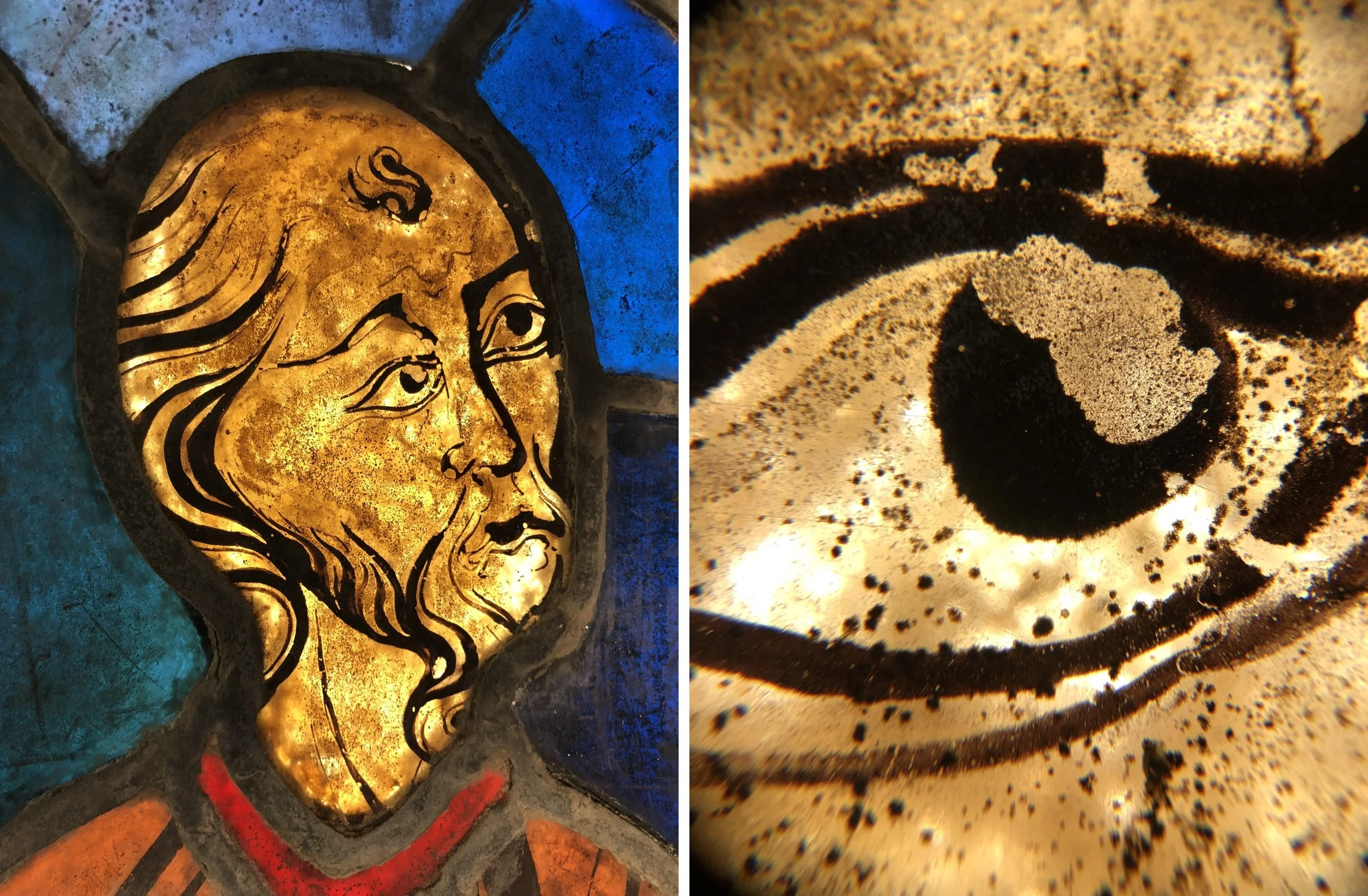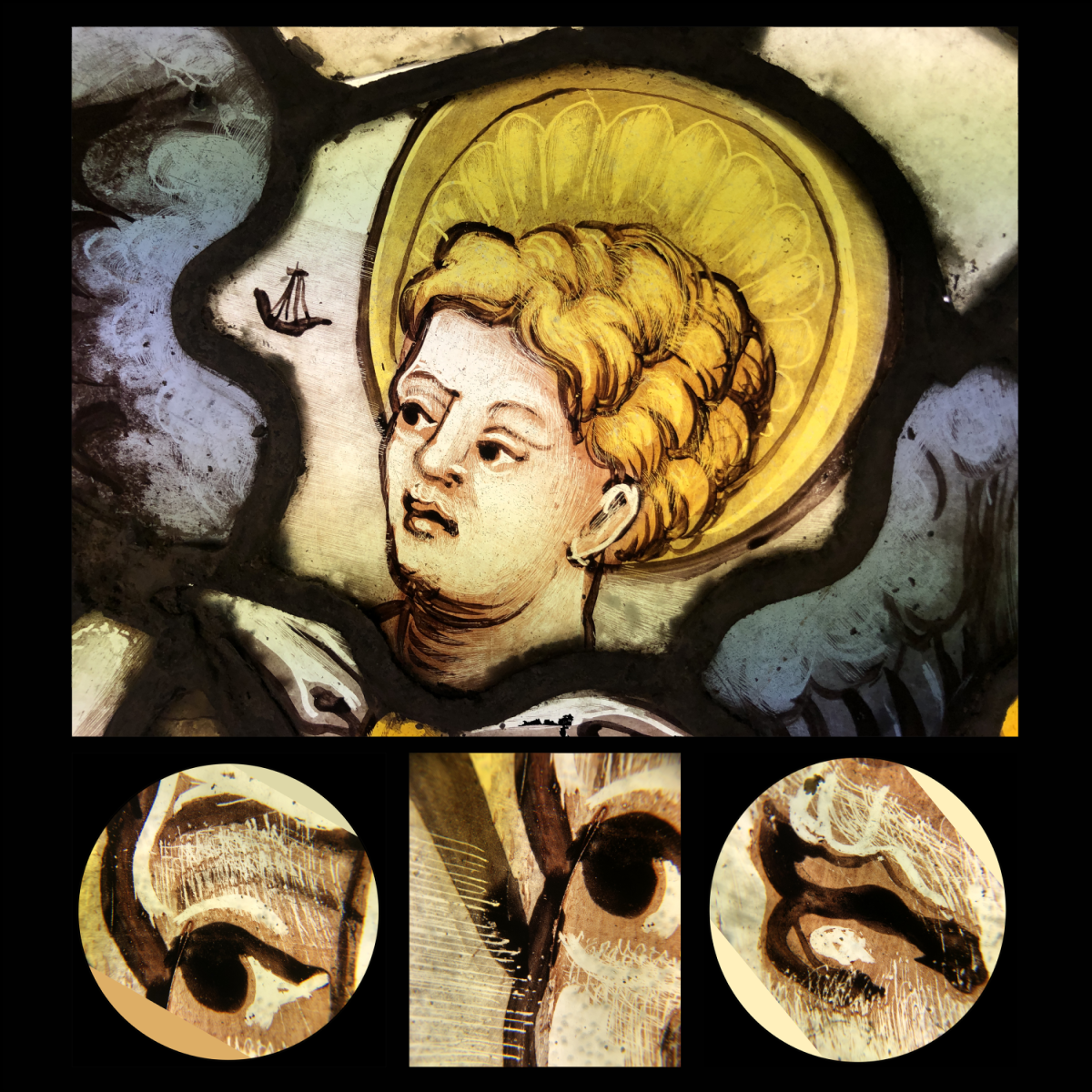Saint Amand-Sur-Fion, near Reims, France
In 2024, I had the privilege of collaborating with Atelier Simon-Marq, a renowned stained glass studio in Reims, France, celebrated for its dedication to the creation of stained glass artworks. Each project that I worked on presented unique conservation challenges and requirements, making the experience both stimulating and diverse.
One notable project involved the conservation of 13th-century stained glass still retaining its medieval lead, which needed to maintain its functionality as a weather shield. In contrast, another project focused on conserving a panel composed of mixed-origin glass. This piece was carefully prepared for exhibition, with optimal and balanced lighting designed to showcase its intricate details while ensuring its preservation.
My primary focus while in Reims was the conservation of 13th, 15th, 16th and 19th-century stained glass panels from a composite window from the Church of Saint Amand in Saint-Amand-sur-Fion. I was eager to work on this project as it had many beautiful and rare aspects to it. The windows, despite still needing to function as a weather shield, retained their medieval lead. Also, the window shows a poem in old French, painted in Gothic calligraphy. Being enthusiastic about my own development in calligraphy, I was thrilled and honoured to conserve these panels, recording all of their interesting details.
Thirteenth-century glass painting (left) and the view of the eye through the microscope (right) where you can see glass corrosion (pitting), paint loss, trace lines and smear shading lines.
Sixteenth-century depiction of Saint Michael. The three images below the primary image highlight details of the eyes and lips, as well as the alterations (scratching out) made to the grisaille paint trace lines and the carnation (also referred to as sanguine or Jean Cousin) paint.
From top left clockwise: Lichen and algae on the exterior surface of the panels; evidence of historic re-painting and re-firing on lettering suffering from paint loss; delicate painted detail; thirteenth-century stained glass showing trace lines, smear shading and glass corrosion (pitting).
Conservation Methodology
In line with the guidelines set forth by the Corpus Vitrearum which advocates for evidence based minimal intervention, the following steps were undertaken:
Cleaning: Surface deposits, including dust and soot accumulated over centuries, were gently removed to eliminate the chance of the deposits damaging the body of the glass. The aesthetic impression and readability of the window improved in all of the panels which was an additional benefit of removing surface deposits.
Structural Repairs (glass): Cracks and fractures in the glass were stabilised using either adhesives, copper foil and in some cases mending leads, depending on the characteristics of the glass damage.
Infills: Where pieces of glass were missing, glass infills were painted to integrate with the original artwork. When the infill was only a fragment of the piece of glass, the infill was joined to the original glass using the copper foiling technique which is easily reversible.
Lead Came Reinforcement: The lead cames (which hold the glass pieces together) were in good condition although the panels were not structurally sound. These leads were carefully reinforced or replaced, ensuring the structural integrity of the panels while retaining as much of the medieval lead as possible.
Ethical Considerations
Throughout the project, a commitment to preserve the historical integrity of the stained glass, as we found it, was paramount. All interventions and additions were designed to be distinguishable from the original work upon close inspection, ensuring transparency in the conservation process. Each intervention carried out was in line with the parameters set out in the Conservation Methodology. This framework, which had been defined at the beginning of the project, allowed the team to make decisions quickly and easily throughout the project. An overview of what to use, how and when was outlined in detail in this document.
Conclusion
The conservation of the stained glass from the Church of Saint-Amand was a project which balanced historical authenticity with the application of modern conservation techniques. Working alongside the skilled artisans at Atelier Simon-Marq was an invaluable opportunity to engage in the preservation of France’s cultural heritage. I hope that these exquisite windows will continue to benefit from dedicated care and academic study, ensuring their rich history is both celebrated and understood for generations to come.
With enough evidence, lacunae could be filled with painted glass infills. The intervention was recorded both on the documentation and on the glass. The painted infill was then attached to the historic glass using the copper foil technique.




